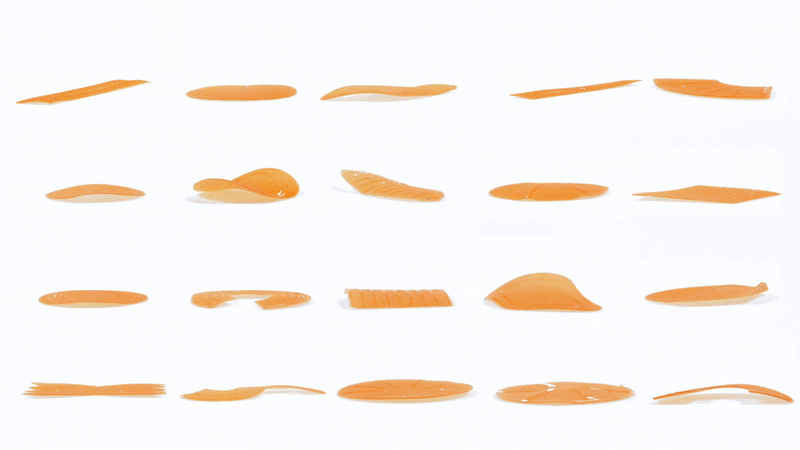
Transformative Appetite: Shape Changing Food Transforms from 2D to 3D by Water Interaction through Cooking
2017-2018
We developed a concept of transformative appetite, where edible 2D films made of common food materials (protein, cellulose or starch) can transform into 3D food during cooking. This transformation process is triggered by water adsorption, and it is strongly compatible with the ‘flat packaging’ concept for substantially reducing shipping costs and storage space.
This project was conducted at Tangible Media Group, MIT Media Lab, where Prof. Lining Yao was finishing her doctoral dissertation.
By Wen Wang*, Lining Yao*, Teng Zhang, Chin-Yi Cheng, Daniel Levine, Hiroshi Ishii (Originally Conducted at MIT, * Contributed Equally)
Publications: ACM CHI 2017 PDF | DOI
News: MIT News | CNN | Popular Science | Fox News | dezeen | Boston Globe |
Talks: reThinkFood | PopTech | Meet the Media Guru | Techfestival
To develop these transformable foods, we performed material-based design, established a hybrid fabrication strategy, and conducted performance simulation. Users can customize food shape transformations through a pre-defined simulation platform, and then fabricate these designed patterns using additive manufacturing. Three application techniques are provided - 2D-to-3D folding, hydration-induced wrapping, and temperature-induced self-fragmentation, to present the shape, texture, and interaction with food materials. Based on this concept, several dishes were created in the kitchen, to demonstrate the futuristic dining experience through materials-based interaction design.
Designing Substrate Film
We fabricate substrate film that has heterogeneous density distribution, which can cause differential expansion upon hydration. In order to achieve controllable bending behavior, ethyl cellulose strips are introduced as both shape constraints and a water barriers on top of the film. This semi-rigid strip structure could help regulate the binding direction and create dynamic shape changing by modulating the top surface’s water adsorption rate.
Self-Folding Dish
Edible 2D films made of common food components (protein, fiber and starch) can be digitally printed. They transform into various 3D shapes upon hydration or decreased air pressure. 2D packaging saves shipping costs, while 3D food create rich texture, mouthfeel and joyful experiences.
Flat-Pack
We develop food that can be flatly-packed, and pop into different 3D shapes through a self-folding process upon water hydration (boiling).

























